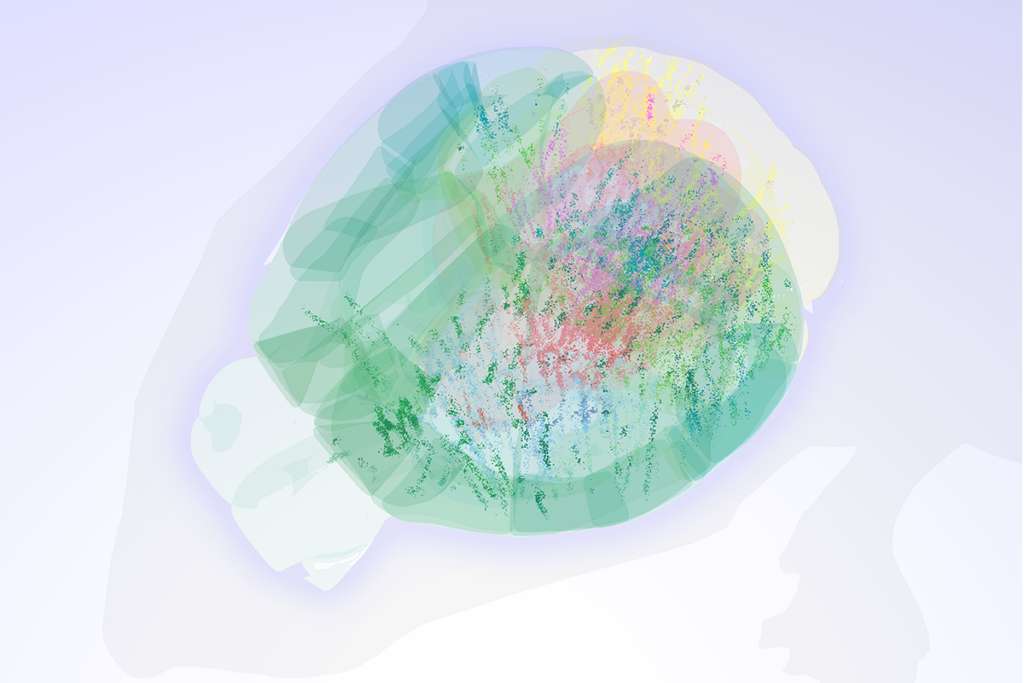“It should mostly not focus on big team science. Large teams should be assembled and pursued with commercial and nonprofit funding for specific projects. The bulk of NIH funding should remain focused on the traditional model.”
—Selmaan Chettih, postdoctoral researcher, Columbia University
“I’ve worked in consortia of around 20 to 40 people, not too small and not too large. Sometimes, I miss the focus and intensity of a small lab of two to three people, where ideas can be developed deeply. Large labs can produce a breadth of results and perspectives, while small groups often bring depth and agility. Both are valuable and complementary. I personally enjoy having a balance between the two.”
—Luana Colloca, professor of pain and translational symptom science and director of the Placebo Beyond Opinions Center, University of Maryland School of Nursing
“There will be a place for both and a need for both. I think there are certain ideas and projects that can only be done by very large teams. I would be worried if there was too much of a shift to large teams because of the risk of inefficiencies, the risk on the rigor of science. I think mainly neuroscience should still be driven by single labs or small collaborations.”
—Jorg Grandl, associate professor of neurobiology, Duke University
“Big team science will produce results that are otherwise difficult to achieve. On the other hand, the creative insight produced by individuals or small teams is priceless.”
—Gautam Kao, researcher, University of Gothenburg
“A balance must be struck between big science, which can hammer down already established theories, and innovative small working groups. While neuroscience could certainly benefit from more big science, I see a danger that these flashy ventures … may stifle small-scale innovation.”
—Friedrich Kling, doctoral student, Wellcome Optical Biology Programme, University College London
“I’ve seen both work tremendously well. We need both. Science needs bigger teams and investment, because it is worth it, but not at the expense of creative science. Chaos can be good. Labs challenge each other.”
—Drew Robson, research group leader, systems neuroscience and neuroengineering, Max Planck Institute for Biological Cybernetics
“Big science continues to grow. We need more funding mechanisms to support it without being too prescriptive—and we need to protect the small science that is, after all, where the best ideas originate.”
—Joshua Sanes, professor emeritus of molecular and cellular biology, Harvard University, contributing editor at The Transmitter
“I definitely think there’s room for team science, and there are opportunities to create new future directions by bringing people together that may not normally talk to each other. And I’m a big fan of those incentive structures. I do think that you want to be careful about not taking away autonomy. You still want PIs to be independent and running their own research programs with core lab funding, but I do think that these team grants can really add synergy and sort of catalyze things.”
—Jason Shepherd, professor of neurobiology, University of Utah
“There is room for both. I’ve been closely involved in the Allen Institute—big science, team science, open science—since almost its founding. They’ve done something unique, which would not have been done otherwise, and there is a lot to be said for that. But I think that should be no more than 10 percent of the overall scientific effort. Most of it should be small labs run by independent investigators … We need some big science. Most advances are going to come from small groups trying new things.”
—Michael Stryker, professor of physiology, University of California, San Francisco
“I think identifying those questions [big science questions] and finding the teams that can do them is great. But it is never going to replace the individual ideas.”
—Anne West, professor of neurobiology, Duke University School of Medicine






